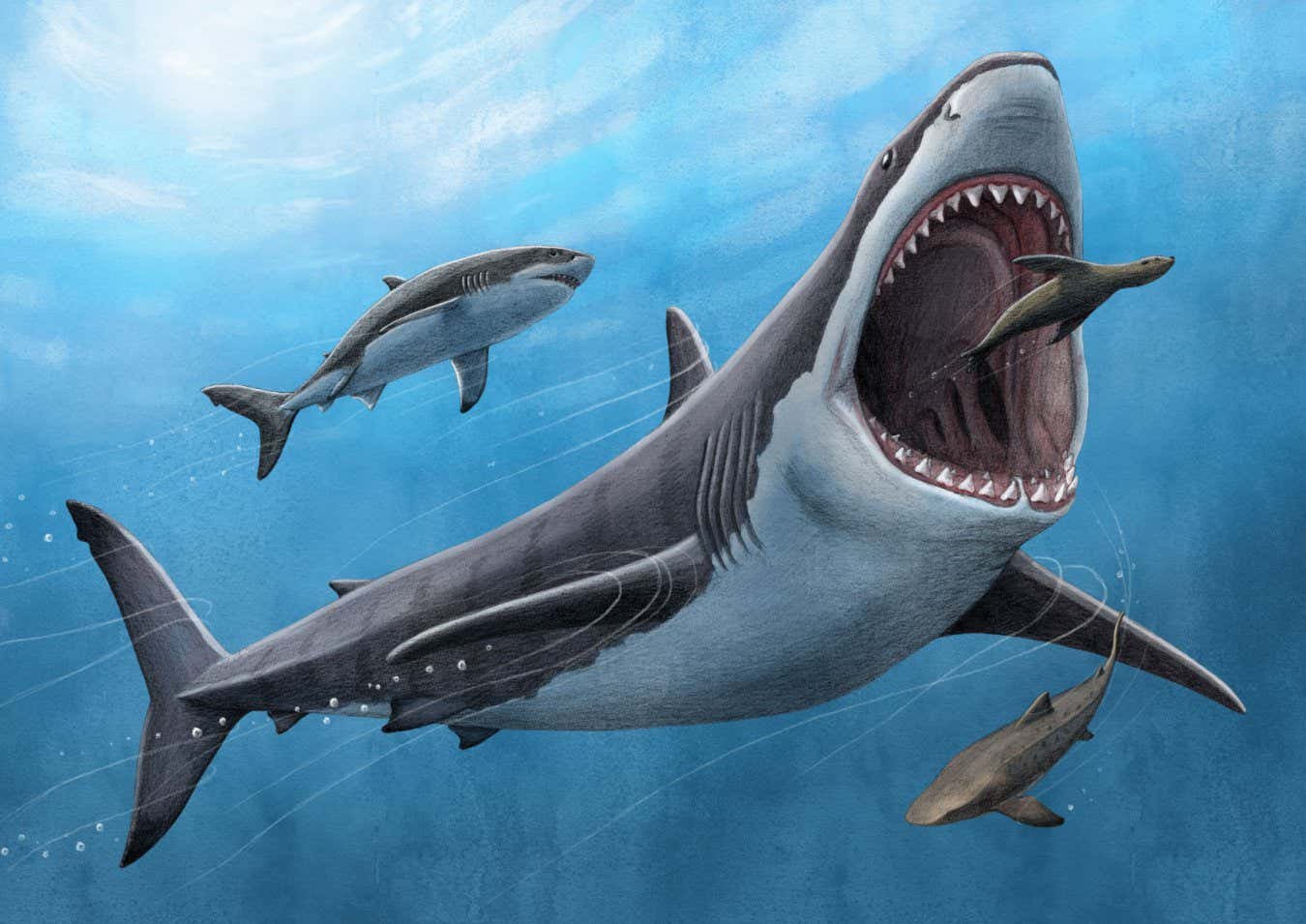An artist’s impression of megalodon
Alex Boersma/PNAS
A recent study has found that the megalodon, the 15-meter-long prehistoric shark that ruled the oceans approximately 3.6 million years ago, had warm-blooded characteristics in some parts of its body. This discovery sheds light on how the massive apex predator grew to such enormous sizes and why it eventually went extinct.
Researchers, led by Robert Eagle from the University of California, Los Angeles, analyzed 29 fossilized megalodon teeth from the Pliocene and Miocene epochs, found in the North Pacific and North Atlantic Oceans. By studying the bonding of carbon-13 and oxygen-18 isotopes within the preserved teeth, the team could determine the temperature of the shark’s body, as higher clumped isotopes indicate warmer conditions.
Their analysis revealed that the average body temperature of the megalodon was around 27°C (80.6°F), which is about 7°C warmer than the waters it inhabited. Warm-bloodedness is uncommon in sharks, with only five out of the 500 known modern-day shark species possessing this adaptation.
According to Eagle, the megalodon was likely regionally endothermic, meaning it produced its own heat through metabolism in specific parts of its body, such as the brain, eyes, and digestive system. However, it was still colder than warm-blooded marine mammals. Lucas Legendre from the University of Texas at Austin suggests that due to the shark’s body temperature being 5°C higher than warm-blooded sharks today, there is a possibility, though unlikely, that the megalodon could have exhibited full-body endothermy similar to mammals.
Prior research has indicated that warm-bloodedness is a key evolutionary pathway for sharks to grow to enormous sizes. Jack Cooper from Swansea University in the UK agrees, stating that this new finding aligns with the idea that warm-bloodedness is connected to the development of large body sizes in sharks. It can also provide insights into the general lifestyle of the megalodon, suggesting that it was an active predator capable of swimming faster, encountering more prey, and undertaking long migrations.
However, being warm-blooded also comes with drawbacks for gigantic animals like the megalodon. Maintaining a high body temperature requires a significant amount of energy, with estimates suggesting the shark may have needed to consume as much as 100,000 calories a day. This reliance on constant food intake to stay warm makes these animals less adapted to rapid environmental changes, such as sea-level drops that occurred during the Pliocene.
In summary, the study provides evidence that the megalodon had warm-blooded characteristics in certain parts of its body, potentially contributing to its massive size and predatory abilities. While warm-bloodedness is rare in sharks, it is linked to the evolution of large body sizes. However, the energy demands of maintaining a high body temperature may have contributed to the megalodon’s ultimate extinction.
Topics:








